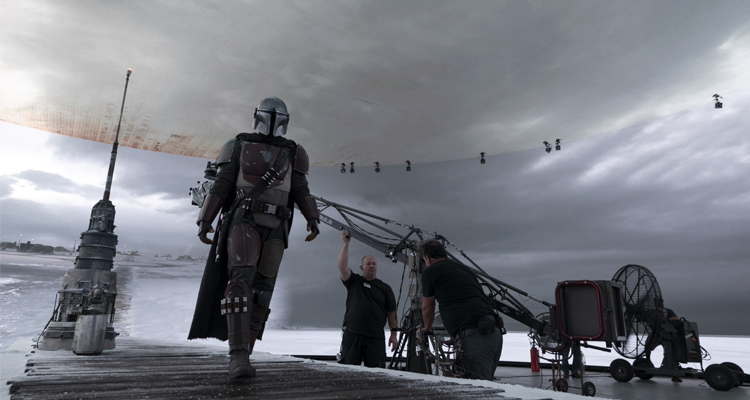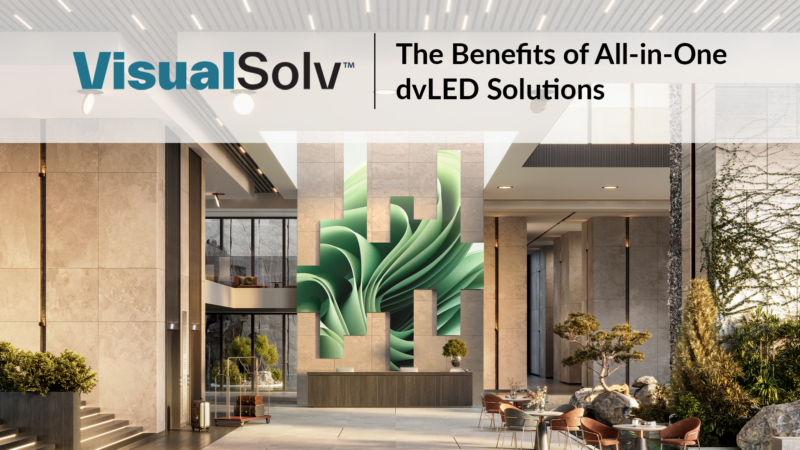Storm The Studio
A few months back, I wrote a piece on the 3 environments integrators should be offering to their customers. One of those 3 environments is the studio. In the piece, I stated, “Whether producing marketing content like podcasts and unboxing videos, teaching hybrid classes, doing worldwide company events or introducing new products and services to the world, great content is more important than ever.”
The hybrid nature of our companies means company studios are more relevant than ever, and as integrators, you should be helping your clients explore the possibilities and build them. I expanded on this by saying, “Besides the obvious camera systems and microphones needed, integrators should be looking at direct-view LED backdrops for live events and recorded shows or using them to replace green screen studios. They should also be helping their clients explore recording studio-level acoustics and lighting.”
These are all areas where an integrator can add a ton of value to their clients because, as professionals, we know things like lighting, cameras, microphones, acoustics and proper video backdrops can be challenging to design and implement to say the least. Creating a professional-level video production takes a lot more than just adding a camera and a screen.
In recent years, studios have started to utilize video backdrops as opposed to green screens. This saves a lot of work in post-production, but if not designed properly, there are a lot of potential problems. Resolution, refresh rates, genlock, shutter speeds, lighting and spacing all become factors to consider.
 If you’re helping a client design a studio, the following are a few things to think about on the video side of the equation.
If you’re helping a client design a studio, the following are a few things to think about on the video side of the equation.
Pixel Density
If you’re choosing a dvLED backdrop to add a little “R” and “B” to your “G”reen screen, then pixel density is definitely a factor to consider. Pixel density refers to how many pixels are in each square meter, and screens are typically referred to by their “dot pitch,” the diagonal distance between pixels. Lower dot pitch means more pixels. Given the emphasis on “resolution” in most displays, you may automatically assume you need the smallest dot pitch available, but you’d actually be wrong. There are a couple of factors that can help you decrease the need for extra pixel density.
Distance
In a public venue setting, we always consider the distance of the viewer to the screen in order to determine the resolution needed. However, in a studio (which is not a public space), we need to consider another distance: the distance of the presenter or “talent” to the screen itself. In a news desk or presenter application, talent may sit 10-15 feet in front of the screen. In an interactive studio (think meteorologist style) where the talent interacts with the screens, they may be much closer. On a large set like “The Mandalorian,” they may be even farther away from the actual screen.
For most studios, the LED screens used are 1.5-mm or 1.8-mm dot pitch, which happens to also be rather cost-effective. For weather reports and the like (with talent closer to the screen), a lot of studios use 1.2-mm or 1.5-mm dot pitches. “The Mandalorian” — with its innovative backdrop and movie-quality production — actually uses a 2.5-mm dot pitch screen. So as you can see, the distance to the talent plays a role.
Of course, distance of the camera to the screen is also something to consider, as well as other camera considerations below.
Cameras
Just placing a basic webcam in front of your talent and screen may not yield the best results. The good news is, you don’t need a full cinema rig. But, you should consider a few things. You’ll need a camera that has controllable shutter speed and aperture settings that has the proper lensing. If you really want to assure the best quality, find one that can be genlocked.
Typically, the camera is focused sharply on the talent, creating a slightly softer focus on the background. This means there is not a need for an ultra-fine pixel pitch to eliminate pixelation*. Proper shutter speed and aperture settings help reduce and eliminate noise effects on the screen during recording. Using genlock to frame sync the screen and the camera is an added measure that can be used.
*An over-the-top, geeky side note: On the Mandalorian set, they sometimes have to replace certain LED modules with a finer dot pitch than 2.5 for specific scenes. Why? Reflections. A tight focus on things like the Mandalorian’s helmet may reveal a reflection of the screen, and because the focus is tight on the helmet, the reflections show the pixels even though the soft focus on the backdrop itself hides it.
Frame and Refresh Rates
Recording in the same frame rate as the video on the backdrop is a must. Most dvLEDs have high refresh rates on the LEDs themselves (typically 3840Hz), but if not synced properly, some lines can be sampled more than others by the imager in the camera. This creates banding. Testing is key, and as stated above, genlock can help alleviate this by syncing the frames on the camera and the screen.
Lighting and Dimming
LED is bright and will need to be dimmed in order to get the right balance between talent and the backdrop (likely under 50% brightness). Talent needs to be lit properly, too. If you don’t know about three-point lighting (key, fill and backlighting), you should brush up on that!
You also need to make sure you mitigate any light spilling over onto the display backdrop. dvLED modules use LED lights embedded in black plastic, which means light spilling on the display can make black look gray, reducing the screen contrast in the areas where light is spilling over. If you want a uniform backdrop, you can’t have an uneven light spill.
This is definitely an elementary primer and I am NOT a broadcast engineer by any means. The good news is we have quite a few of them in the industry, and it may be time to partner up or hire one if you’re building a studio for your clients.
The moral of the story is that your clients may benefit from a studio, and it’s not something that they can do easily themselves. So start the conversation, start asking the right questions and help them connect the dots to achieve the professional-looking content and live events they need to succeed in this new hybrid world.





